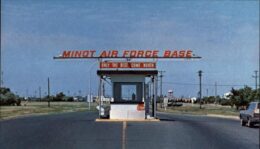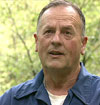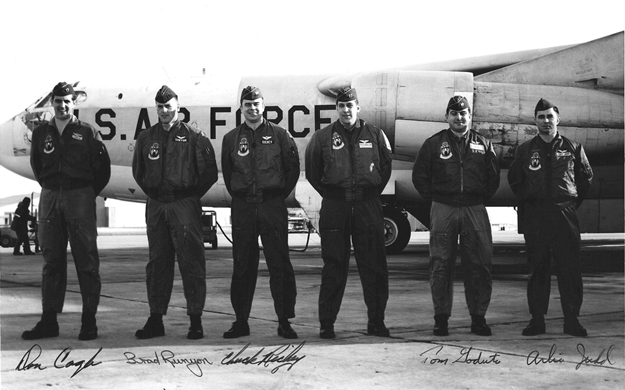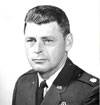by Charles Lear, author of “The Flying Saucer Investigators.”

At the suggestion of Mr. Martin Willis, this week we are looking at a report involving a UFO incident on October 24, 1968, at Minot AFB in North Dakota. It involved sightings reported by ground observers stationed at the surrounding Minuteman ICBM complex as well as the crew of a B-52. What gives this case extra significance is that there are available photos of the B-52 radarscope to back up the crew’s account. There is a Project Blue Book file on the case that contains the conclusion that what was seen was possibly a combination of “anomalous propagation” of radar returns, a plasma ball, and celestial bodies, but an exceptional investigation begun in 2000 by members of the recently formed Sign Historical Group indicates that the incident involved something genuinely mysterious.

The case came to the attention of SHG researchers when one of the B-52 crew members, Capt. Bradford Runyon USAF (ret.), contacted the Center for UFO Studies in 2000 and filled out a CUFOS UFO Questionnaire. The researchers, Thomas Tullien, Jan Aldrich, and James Klotz, spent the next several years collecting documentation and interviewing the B-52 crew members, non-crew pilot Major James Partin, and Air Force personnel stationed at Minot. They made the results of their efforts available online as part of the Sign Oral History Project at a site devoted to the case, 24 October 1968-Minot AFB-North Dakota.
 This case came at a time when Project Blue Book had just come under scrutiny by the U.S. Congress after scientific consultant J. Allen Hynek had made the suggestion in Michigan that people had been seeing marsh gas (the papers reported he said swamp gas) during a UFO flap around Dexter in March of 1966. Gerald Ford, who was the state representative then and the house minority leader, moved the Armed Services Committee to hold a hearing on April 5, 1966. There to answer questions were Secretary of the Air Force Harold Brown, Project Blue Book Director Hector Quintanilla, and Hynek.
This case came at a time when Project Blue Book had just come under scrutiny by the U.S. Congress after scientific consultant J. Allen Hynek had made the suggestion in Michigan that people had been seeing marsh gas (the papers reported he said swamp gas) during a UFO flap around Dexter in March of 1966. Gerald Ford, who was the state representative then and the house minority leader, moved the Armed Services Committee to hold a hearing on April 5, 1966. There to answer questions were Secretary of the Air Force Harold Brown, Project Blue Book Director Hector Quintanilla, and Hynek.
The outcome was that the Air Force was moved to fund a scientific study at the University of Colorado headed by Dr Edward U. Condon. To aid the efforts of what became known as “The Condon Committee,” Air Force Regulation 80-17 was put into place, which required “prompt reporting and rapid evaluation of data for successful identification.” It is stated just after the description that “Strict compliance with this regulation is mandatory.”
The Blue Book file available on the SOHP site has a series of 12 memos between Blue Book, Strategic Air Command, and personnel at Minot AFB that tell a story of the evolution of the Blue Book investigation from the first contact with the Minot AFB UFO investigator, Lt. Col. Arthur J. Werlich.
The first memo is dated 24 October 1968 and describes how Lt. Marano, who wrote the memo, was told by a Foreign Technology Division duty officer that they had gotten a report of “an important UFO sighting” at Minot. Marano wrote that he told Quintanilla about it and then called Werlich. According to him, Werlich hadn’t expected a response that night and described the duty officer as being more excited about the incident than he was. Marano wrote that Werlich conceded that it was an unusual sighting and asked if those at Blue Book “could help him in any way.”
Marano then included the details of the sightings as told to him by Werlich, starting with a brief summation of the encounter by the B-52 crew:
 At about 0300 hours local, a B-52 that was about 39 miles northwest of Minot AFB and was making practice penetrations sighted an unidentified blip on their radar. Initially the target traveled approximately 2 1⁄2 mile in 3 sec or at about 3,000 mi/hr. After passing from the right to the left of the plane it assumed a position off the left wing of the 52. The blip stayed off the left wing for approximately 20 miles at which point it broke off. Scope photographs were taken. When the target was close to the B-52 neither of the two transmitters in the B-52 would operate properly but when it broke off both returned to normal function.
At about 0300 hours local, a B-52 that was about 39 miles northwest of Minot AFB and was making practice penetrations sighted an unidentified blip on their radar. Initially the target traveled approximately 2 1⁄2 mile in 3 sec or at about 3,000 mi/hr. After passing from the right to the left of the plane it assumed a position off the left wing of the 52. The blip stayed off the left wing for approximately 20 miles at which point it broke off. Scope photographs were taken. When the target was close to the B-52 neither of the two transmitters in the B-52 would operate properly but when it broke off both returned to normal function.

Werlich also described sightings of a bright orange-red object by at least 15 people on the ground around the time of the B-52 encounter. In addition, he said that a security alarm for both the inner and outer ring of one of missile sites had been activated and that the outer door was found open and the combination lock on the inner door had been moved.
According to Marano, Quintanilla told him that the Blue Book staff needed more precise information before they could do anything, and Werlich said he’d get it for them.
Rather than go through all 12 memos individually, we’ll sum them up in a narrative as best we can. On October 28, Col. Weyant from Strategic Air Command HQ called to find out how Blue Book had received the report and who was handling it. He was told that they got the report by phone and that Marano was handling it. That same day, Col. Weyant called back (the memo writer got the name wrong and identified him as “Col. Wyatt.”) and wanted to know if Blue Book personnel ever participated in investigations and was told by Marano that they seldom went out into the field. Marano told him they felt that Werlich was quite competent and didn’t require any assistance from them at that time.
On October 29, Col. Pullen from SAC HQ called and asked for, in Quintanilla’s words, “a brief run-down of the Minot sightings.” Quintanilla told him that the blip on the radar could have been caused by “the aircraft transmission receiver, that there was an inversion, and that people could have been seeing celestial bodies affected by the inversion and “scintillation.” Pullen asked for a preliminary report and Quintanilla told him he needed a more precise timeline from Werlich.
Pullen asked if they had sent anyone to Minot and Quintanilla told him no and explained that he only had four people on his staff including himself, a secretary, an assistant, and an administrative sergeant. Pullen again asked for a preliminary report so that, in Quintanilla’s words, “he could give it to General Stewart to get this thing simmered down.” The memo describing this exchange ends with this: “He requested that Col Quintanilla hit a little heavy on what has happened to other aircraft on occasions like this, this would help play the issue down.”
Marano phoned Minot and spoke with Sgt. Hoy, as Werlich was flying. He requested that Werlich send the navigator go with someone to interview all the observers in order to obtain precise details covering all the circumstances around the sightings and said that Werlich should send those by teletype. He specifically stated that the following was to be sent to them by mail: A map of the area, a map of the flight path of the B-52 from 0258 hours until it landed, AF-117 forms (sighting report forms) from all the observers, and copies of the radarscope photos.
Werlich called and talked to Marano and told him he didn’t see how the navigator could help but said he himself had people fill out the forms while he monitored them and showed them what various angles, 60º, 90º, etc. looked like.
In the course of their conversation, Werlich told him that there were farm fields where the light was seen by observers at the November-7 site and that it could have not be produced by anything on the ground there. He said that other ground observers saw both the B-52 and the light when it was over the same area. He said that Marano would find “that the most information comes from Airman O’Conner and Isley, and an aircraft instructor.”
Marano asked if “it” was going with the wind, explaining that they’d “had trouble with hot air balloons,” and Werlich said the geography of the area made this impossible.
Werlich also said that he wanted to check Oscar-7, the site of the break-in, with a Geiger counter. He said that they’d had three other break-ins over three years by former personnel with keys but that there were no tire tracks, footprints, etc. found at Oscar-7 the next day.
Marano told Werlich “SAC was giving us trouble because they wanted to know what we are doing.” Werlich said that they had asked earlier for “technical assistance” and did what they could when they didn’t get it.
Werlich said he was sending the material requested and described that the blip on the B-52 radar was “a fairly good size blip” and emphasized how unusual the failure of the radio transmitters was. He said it was his opinion that it couldn’t have been a malfunction because they “transmitted before and afterwards.”
Giving an indication of what the conclusion in the Blue Book report would be, Marano explained that there were “many astronomical bodies” in the area that could been magnified by the inversion, and Werlich said there was a “Raggedy Ann” cloud cover and that some observers could see stars and some couldn’t.
The conversation ended with Werlich saying he had done all he could to comply with the regulation and that he was “at the limit of my capabilities.” He said this was his first report and that he didn’t know how to ask questions etc., and he “had spent too much time on it already.” The last two memos describe failed attempts to contact Werlich after several calls.
Other memos reflect SAC’s interest in the case and there is a request that they receive a report as quickly as possible. The conclusions already mentioned put the case to rest for over thirty years, but the investigation by the SHG members revealed some very strange aspects of the case not mentioned in the Blue Book report.
Next week: The SHG investigation.
Podcast: Play in new window | Download